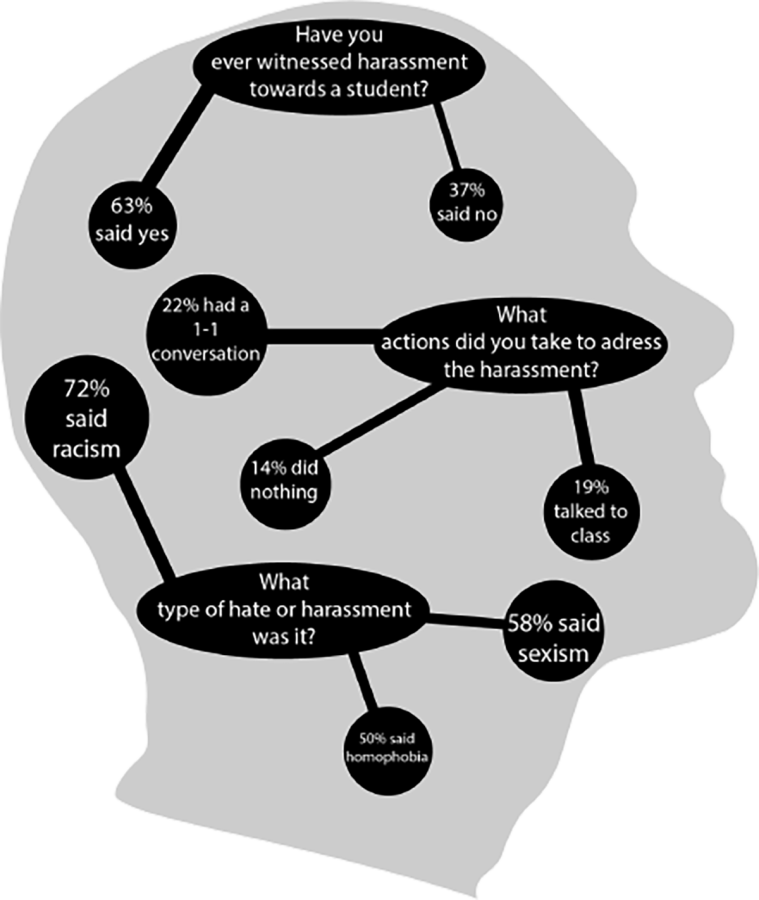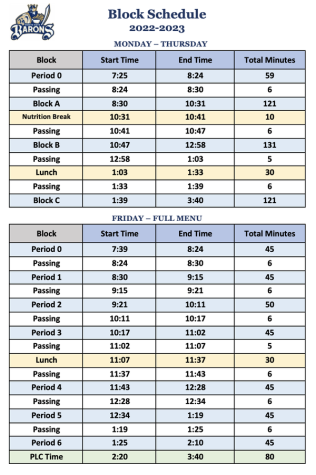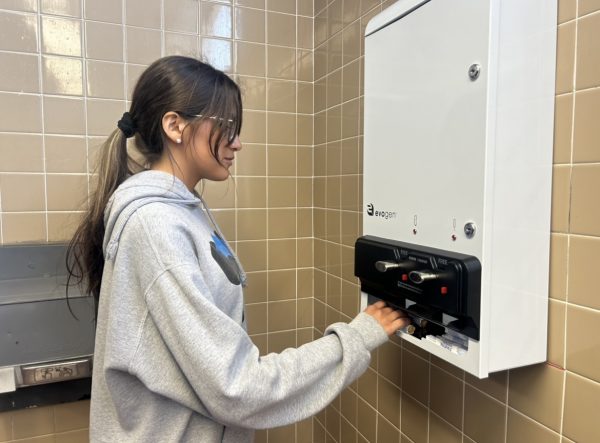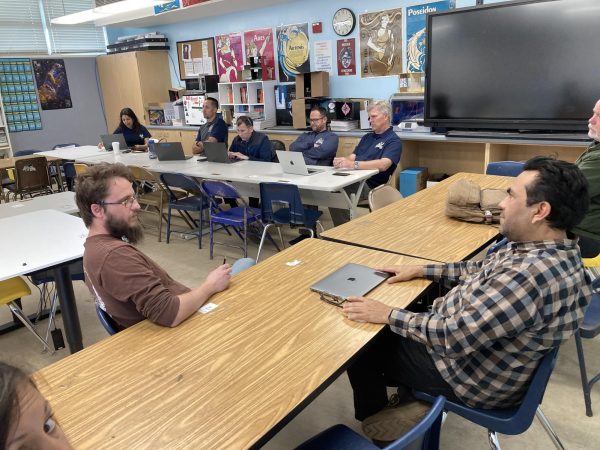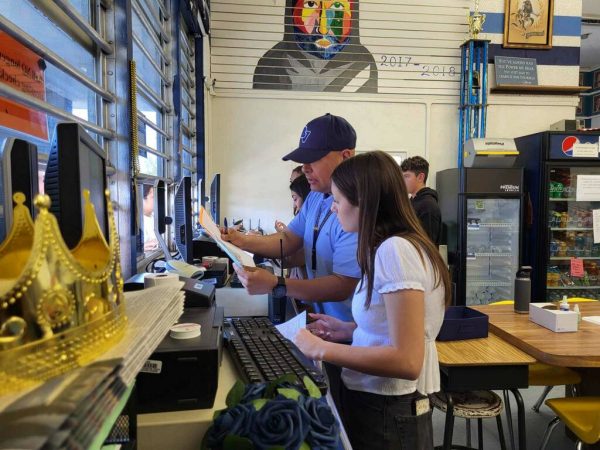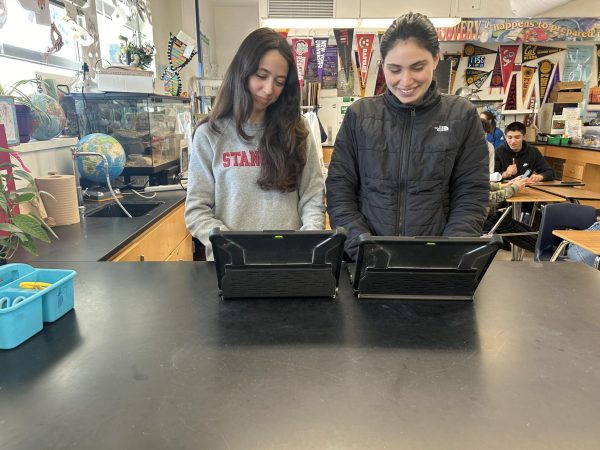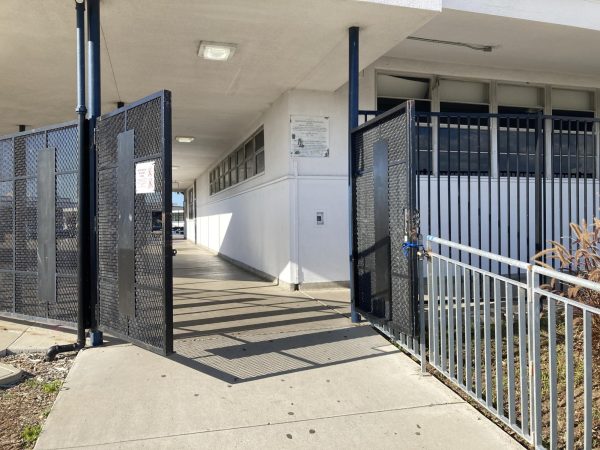Staff members respond
Survey administered to staff on combatting hate speech
On April 4, the Culture and Climate Committee sent a survey to staff members asking about their experience with harassment and hate in the classroom. 46 staff members responded to the survey.
May 10, 2022
“Racism: A system of oppression that benefits white people at the expense of people of color.” A plethora of definitions and “key terms” were defined at the beginning of a staff survey sent out to Bonita Vista High (BVH) staff on April 4.
Staff members received an email from Culture and Climate Committee member Kalie Espinoza asking them to fill out a Google Form survey. The survey asked staff members about their experience with hate, racism and harassment on campus. Half of all BVH staff were reported to have responded to the survey.
Recent events on campus such as the anti-semitic grafitti and offensive slurs targeting a BVH teacher prompted the school’s Culture and Climate Committee to respond. Assistant Principal Esther Wise states that a response to last semester’s graffiti had been one in the making, thus the staff survey was the first step.
“We sent the survey, because we felt that was a good starting point to address what was happening. What happened on campus last semester, in terms of the vandalism and the graffiti, impacted our school,” Wise said. “So we wanted to start by surveying the staff to see where they are and how comfortable they are in having these discussions in their classroom.”
Espinoza volunteered to draft the initial survey. After various meetings and edits, the survey was approved by Wise and BVH principal Roman Del Rosario, Ed.D. A response to last semester’s events had been in works since January and the Culture and Climate Committee eventually decided on using a survey to introduce the topic to staff.
The Culture and Climate Committee needed faculty information and input to get a sense for how much “buy in” they would get. Expository Reading and Writing teacher Carmen Ramirez showed a positive response to the survey sent.
“When I first saw it, I was actually excited to finally see some type of change […] Starting surveys will alert not only staff, but admin, that there is a problem and to try to sort out any problems here. When it comes to bullying, racism, sexism, or whatever type of harassment, we see it in the class all the time. I don’t allow it in my class, but I hear from other classes that it is an issue,” Ramirez said.
Ramirez has been a teacher at BVH for 16 years and has noted a shift in the student culture heading towards the “wrong direction.” She mentions that, while she doesn’t allow any type of mistreatment or harassment in her classroom, she hears other stories about sexism and racism in other classes on campus. Ramirez acknowledges the underlying issues that staff try to “brush away” and that prior to last semester’s incidents, these subjects weren’t officially addressed by the administration.
In instances where Ramirez is confided in about acts of harassment or hate speech, she often refers the students to make a formal complaint to administration. Wise reiterates that BVH administration has tried promoting the P3 Tips app for students to report instances of harassment anonymously.
We understand that our students are here most of the day, and we want them to be happy, safe and comfortable.
— Assistant Principal Esther Wise
“We take that very seriously as part of our safety plan. We understand that our students are here most of the day, and we want them to be happy, safe and comfortable. So bullying, we don’t tolerate it,” Wise said.
The survey’s purpose was to determine the collective consensus staff members exhibited towards receiving professional advice on anti-hate speech in the classroom. Towards the end of the survey, staff members were asked if they would appreciate professional guidance.
“We wanted to see; is there an interest in professional development? Is there interest in learning about anti-hate initiatives? Is there an interest in actually teaching those things to our students?” Espinoza said. “We saw pretty overwhelmingly that the answer was yes, so that’s a really good sign.”
The Culture and Climate Committee and Ramirez agree that topics of hate, racism and harassment need to be addressed in the classroom. Espinoza conveys her beliefs as a teacher that professional help would be beneficial for students and staff.
“It’s learning how to interrupt microaggressions and hate speech and knowing what to say when something like that happens in your classroom,” Espinoza said. “That language of interruption can be really challenging, so having professionals come in and teach us how to talk and how to interrupt those types of conversations is super impactful. I would want to attend more training because the more I learn and practice it, the more natural it becomes.”

